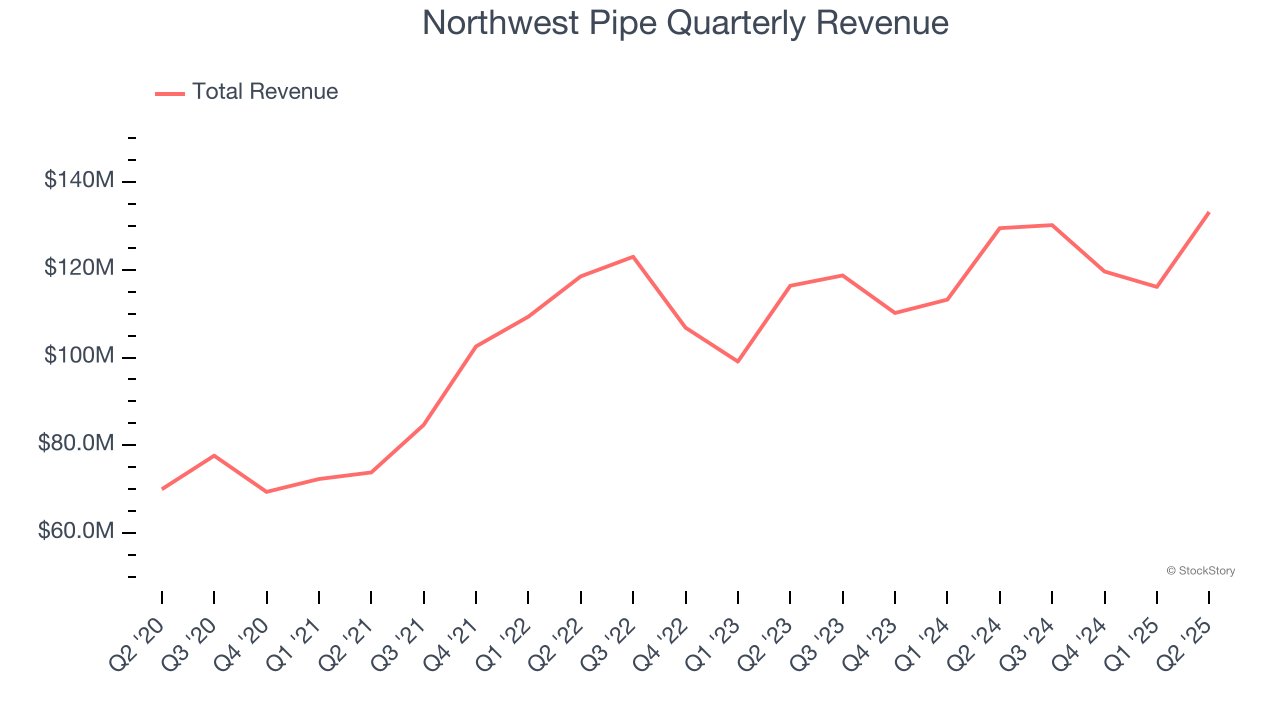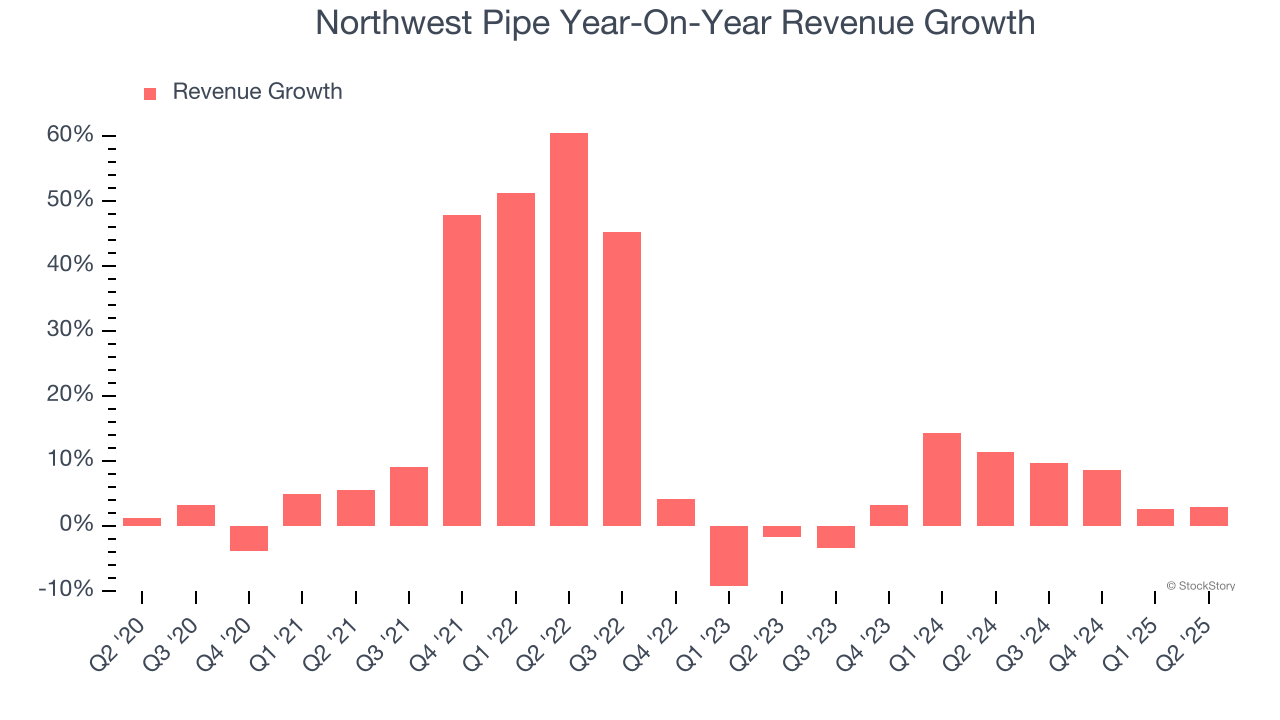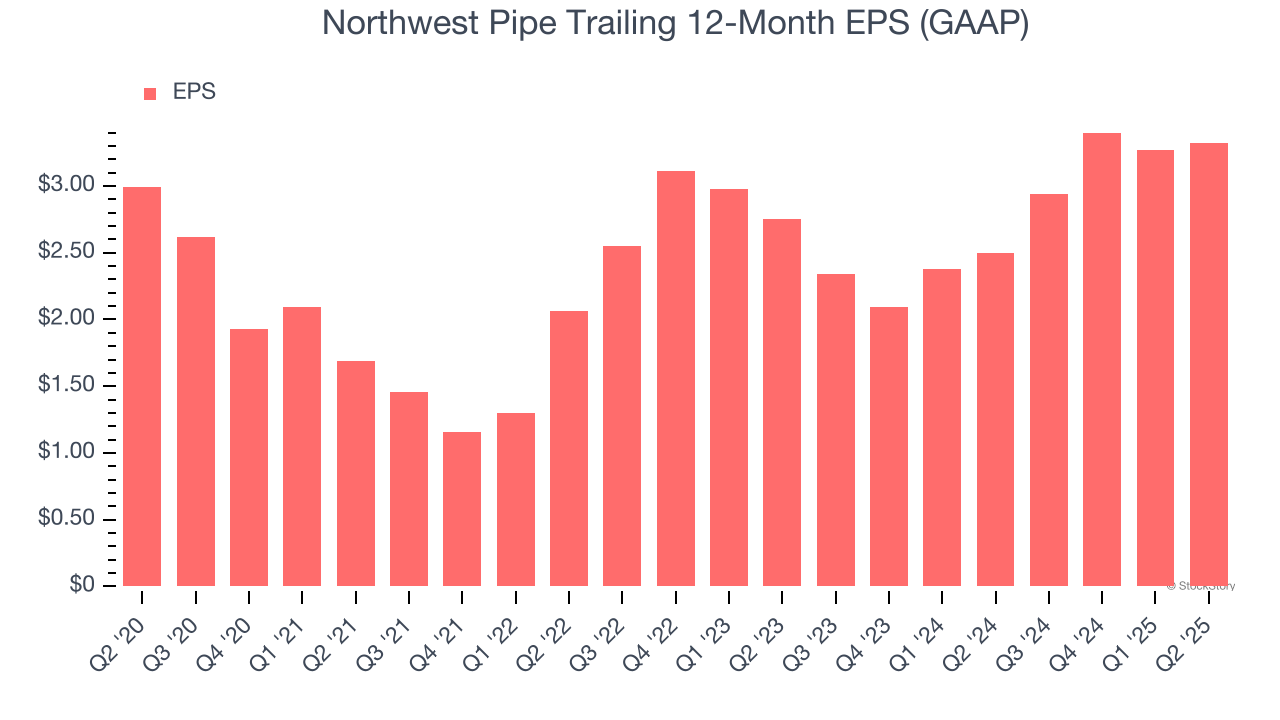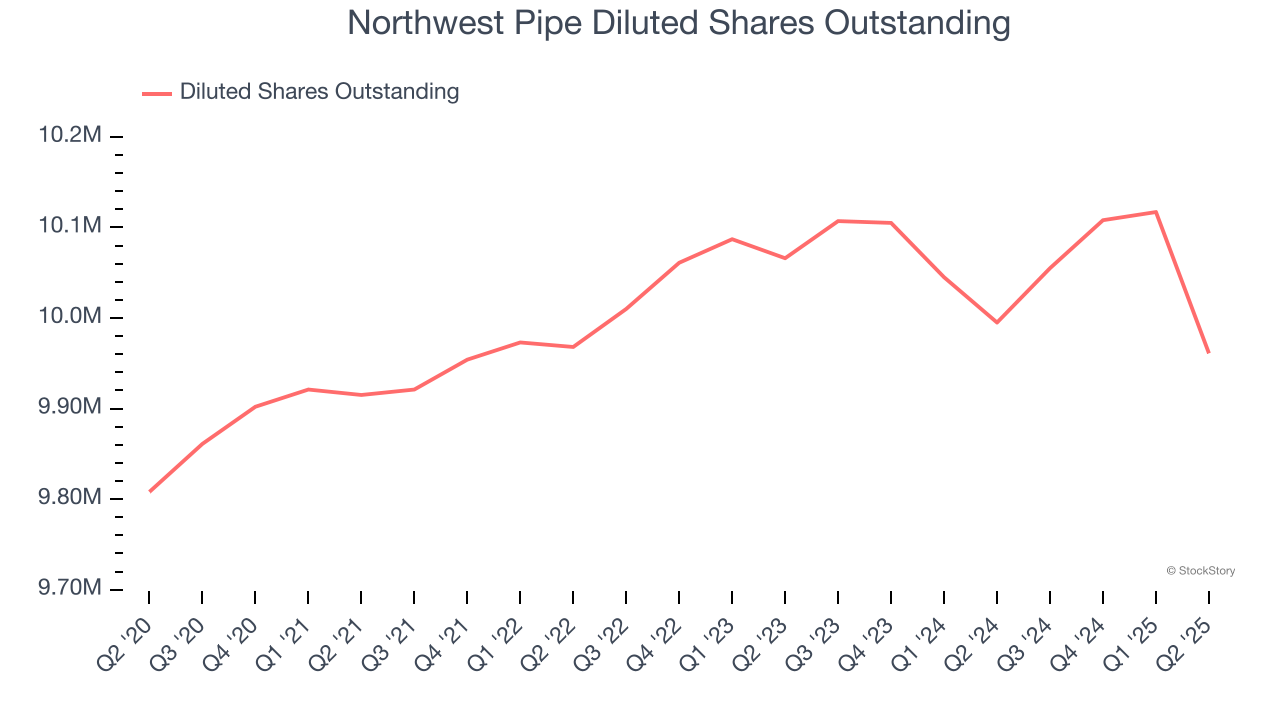
Water management company Northwest Pipe (NASDAQ: NWPX) reported revenue ahead of Wall Street’s expectations in Q2 CY2025, with sales up 2.8% year on year to $133.2 million. Its GAAP profit of $0.91 per share was 27% above analysts’ consensus estimates.
Is now the time to buy Northwest Pipe? Find out by accessing our full research report, it’s free.
Northwest Pipe (NWPX) Q2 CY2025 Highlights:
- Revenue: $133.2 million vs analyst estimates of $120.9 million (2.8% year-on-year growth, 10.1% beat)
- EPS (GAAP): $0.91 vs analyst estimates of $0.72 (27% beat)
- Operating Margin: 9.9%, in line with the same quarter last year
- Free Cash Flow Margin: 1.4%, down from 12.5% in the same quarter last year
- Market Capitalization: $422 million
"In the second quarter, NWPX Infrastructure delivered record results, demonstrating strong operational execution and demand across both business segments," said Scott Montross, President and Chief Executive Officer of NWPX Infrastructure, Inc.
Company Overview
Playing a large role in the Integrated Pipeline (IPL) project in Texas to deliver ~350 million gallons of water per day, Northwest Pipe (NASDAQ: NWPX) is a manufacturer of pipeline systems for water infrastructure.
Revenue Growth
Examining a company’s long-term performance can provide clues about its quality. Any business can experience short-term success, but top-performing ones enjoy sustained growth for years. Thankfully, Northwest Pipe’s 11.8% annualized revenue growth over the last five years was impressive. Its growth beat the average industrials company and shows its offerings resonate with customers.

We at StockStory place the most emphasis on long-term growth, but within industrials, a half-decade historical view may miss cycles, industry trends, or a company capitalizing on catalysts such as a new contract win or a successful product line. Northwest Pipe’s recent performance shows its demand has slowed significantly as its annualized revenue growth of 5.9% over the last two years was well below its five-year trend. 
This quarter, Northwest Pipe reported modest year-on-year revenue growth of 2.8% but beat Wall Street’s estimates by 10.1%.
Looking ahead, sell-side analysts expect revenue to grow 2% over the next 12 months, a deceleration versus the last two years. This projection is underwhelming and indicates its products and services will face some demand challenges.
Today’s young investors won’t have read the timeless lessons in Gorilla Game: Picking Winners In High Technology because it was written more than 20 years ago when Microsoft and Apple were first establishing their supremacy. But if we apply the same principles, then enterprise software stocks leveraging their own generative AI capabilities may well be the Gorillas of the future. So, in that spirit, we are excited to present our Special Free Report on a profitable, fast-growing enterprise software stock that is already riding the automation wave and looking to catch the generative AI next.
Operating Margin
Northwest Pipe has done a decent job managing its cost base over the last five years. The company has produced an average operating margin of 8.5%, higher than the broader industrials sector.
Looking at the trend in its profitability, Northwest Pipe’s operating margin rose by 1.7 percentage points over the last five years, as its sales growth gave it operating leverage.

In Q2, Northwest Pipe generated an operating margin profit margin of 9.9%, in line with the same quarter last year. This indicates the company’s cost structure has recently been stable.
Earnings Per Share
Revenue trends explain a company’s historical growth, but the long-term change in earnings per share (EPS) points to the profitability of that growth – for example, a company could inflate its sales through excessive spending on advertising and promotions.
Northwest Pipe’s EPS grew at a weak 2.1% compounded annual growth rate over the last five years, lower than its 11.8% annualized revenue growth. However, its operating margin actually improved during this time, telling us that non-fundamental factors such as interest expenses and taxes affected its ultimate earnings.

We can take a deeper look into Northwest Pipe’s earnings to better understand the drivers of its performance. A five-year view shows Northwest Pipe has diluted its shareholders, growing its share count by 1.6%. This dilution overshadowed its increased operating efficiency and has led to lower per share earnings. Taxes and interest expenses can also affect EPS but don’t tell us as much about a company’s fundamentals. 
Like with revenue, we analyze EPS over a more recent period because it can provide insight into an emerging theme or development for the business.
For Northwest Pipe, its two-year annual EPS growth of 9.9% was higher than its five-year trend. Accelerating earnings growth is almost always an encouraging data point.
In Q2, Northwest Pipe reported EPS at $0.91, up from $0.86 in the same quarter last year. This print easily cleared analysts’ estimates, and shareholders should be content with the results. Over the next 12 months, Wall Street expects Northwest Pipe’s full-year EPS of $3.32 to grow 2.4%.
Key Takeaways from Northwest Pipe’s Q2 Results
We were impressed by how significantly Northwest Pipe blew past analysts’ EPS expectations this quarter. We were also excited its revenue outperformed Wall Street’s estimates by a wide margin. Zooming out, we think this was a solid print. The stock traded up 1.9% to $43.60 immediately following the results.
Northwest Pipe may have had a good quarter, but does that mean you should invest right now? What happened in the latest quarter matters, but not as much as longer-term business quality and valuation, when deciding whether to invest in this stock. We cover that in our actionable full research report which you can read here, it’s free.






